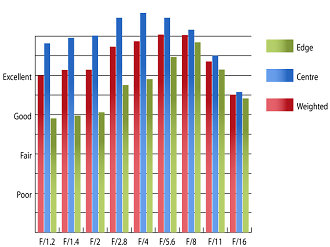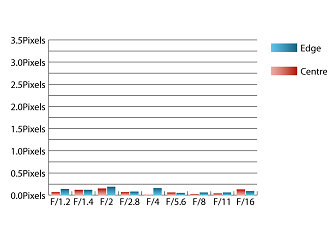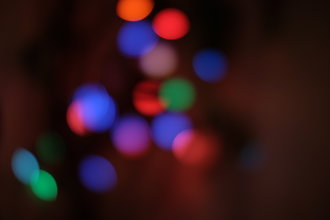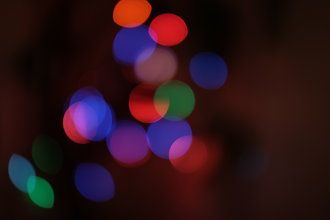Fujifilm Fujinon XF 56mm f/1.2 R APD Lens Review
Fujifilm Fujinon XF 56mm f/1.2 R APD Performance
At maximum aperture, sharpness in the centre of the frame is outstanding and clarity towards the edges falls just short of good levels. This won't pose too much of an issue for portraiture, or for other photographic disciplines that require high sharpness in the centre of the frame.
As the lens is stopped down, sharpness levels increase across the frame, with outstanding sharpness being achieved from edge to edge from f/5.6.
How to read our charts
The blue column represents readings from the centre of the picture frame at the various apertures and the green is from the edges. Averaging them out gives the red weighted column.The scale on the left side is an indication of actual image resolution. The taller the column, the better the lens performance. Simple.
For this review, the lens was tested on a Fujifilm X-T1 using Imatest.
Chromatic aberrations are so well controlled, that Imatest barely picked up any fringing at all. This extremely low level of CA should be virtually impossible to spot, even in harsh crops from the edges of the frame, or in large reproductions.
How to read our charts
Chromatic aberration is the lens' inability to focus on the sensor or film all colours of visible light at the same point. Severe chromatic aberration gives a noticeable fringing or a halo effect around sharp edges within the picture. It can be cured in software.Apochromatic lenses have special lens elements (aspheric, extra-low dispersion etc) to minimise the problem, hence they usually cost more.
For this review, the lens was tested on a Fujifilm X-T1 using Imatest.
Falloff of illumination towards the edges of the frame is typical for a wide aperture lens, with the corners being 2.3 stops darker than the image centre at f/1.2. Visually uniform illumination is achieved with the lens stopped down to f/5.6 or beyond.
Imatest was only able to detect a level of 0.0352% pincushion distortion. For all intents and purposes this extremely low level of distortion can be considered negligible.
With, or without, the deep circular hood attached, this lens is very resistant to flare, even in harsh backlit situations. Contrast levels remain good when shooting into the light.
Value For Money
This 56mm APD lens from Fuji costs around £1000, which is a 33% premium over the standard 56mm f/1.2, which costs around £750. Whether the APD filter will represent good value to you, will depend on a number of factors, so it isn't as clear cut as you may think to choose between the two lenses.
There are currently no comparable lenses available for Fuji X-series cameras. Canon's 85mm f/1.2 is probably the best-known medium telephoto with a maximum aperture of f/1.2 and that costs around £1500!
Add your message
Please login here or if you've not registered, you can register here. Registering is safe, quick and free.
photodo Stats
428 MTF tests
74 in-depth photodo reviews
100+ users join each day
Help the lens community by reviewing or rating a lens today via our lens search
Latest Lens Reviews
- Chinon 28mm f/2.8 Vintage Lens Review
- Canon EF 70-200mm f/4L IS II USM Lens Review
- Samyang AF 85mm f/1.4 EF Review
- Sigma 70mm f/2.8 DG Macro Art Review
- Samyang AF 24mm f/2.8 FE Review
- Meike 50mm f/1.7 Review
- Tamron 70-210mm f/4 Di VC USD Review
- Lensbaby Burnside 35mm f/2.8 Review
- Asahi Super Takumar 50mm f/1.4 Review
- Asahi Super-Multi-Coated Takumar 135mm f/3.5 Review




